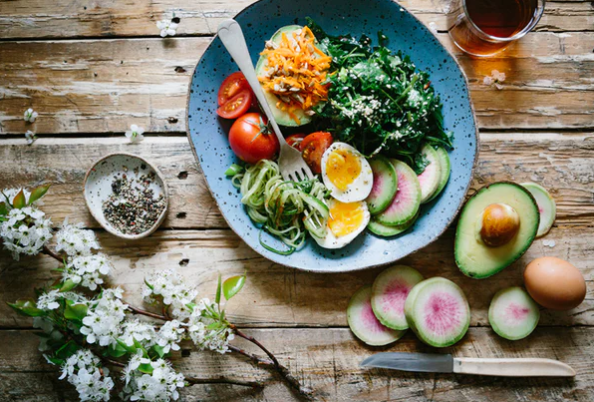Physical Address
304 North Cardinal St.
Dorchester Center, MA 02124
Physical Address
304 North Cardinal St.
Dorchester Center, MA 02124
Many books and websites are promoting choices, techniques, and tips for sustainable cooking and eating. The emphasis on green cooking and the variety of new recipes and diet plans are good news for overweight dieters concerned about weight control, diabetics concerned about carbohydrates and sugar, and heart disease patients concerned about heart-healthy eating.
Diet and fitness goals can also be achieved by green practices such as eating less meat and more fresh fruits and vegetables. Green cooking practices are sustainable practices that provide long term benefits to individuals and the environment. Healthy eating reduces energy waste and carbon footprints while helping to save the planet.
Healthy Eating is Sustainable Eating
From Michael Pollan (The Omnivores Dilemma and In Defense of Food) to Mark Bittman (Food Matters: A Guide to Conscious Eating) and beyond, authors have described how the food we eat is doing damage to the environment. They urge change for the sake of the planet. Other authors like Kate Heyhoe (Cooking Green: Reducing Your Carbon Footprint in the Kitchen) and Jackie Newgent (Big Green Cookbook) approach the topic from the point of view of foodies and dieticians who care about energy conservation and the climate-changing carbon footprint left behind by cooking and eating choices.
The United States Department of Agriculture advocates eating less meat, more fruits and vegetables, and less fat for control of chronic disease (heart disease, diabetes, obesity). Individuals who care about their diet and fitness are looking for locally grown and organic foods to ensure health. Many who want to save money on energy bills have discovered solar and microwave cooking. For all of these reasons plus the desire to do our bit for the planet are motivating green cooking practices.
Green Cooking Recipes
Environmentalist author Bittman goes a step beyond Pollan by offering recipes for sustainable cooking in his book. These healthy recipes use less meat, include lots of green vegetables, and flavor deserts with nuts and grains instead of refined sugar. His reviewers have mentioned that his book promotes “a diet in synch with the needs of the earth.”

Kate Heyhoe is an intense foodie whose green cooking guide includes lots of information and statistics to prove her points. In addition to recipes, she comments on cookware, ingredient choices, and cooking methods that cut carbon while not taking the fun and flavor out of cooking.
Jackie Newgent talks about doing a “green-over” of recipes to make them more environmentally responsible. She calls for more poultry and less beef, smaller portions, and choosing vegetables in season. She is a believer in the benefit to flavor of fresh, local ingredients including the herbs that are so often purchased in grocery store bottles that have a much larger carbon footprint. She urges cooks to use methods that reduce cooking time and energy consumption. Food storage that doesn’t require foil or plastic wrap is also a green kitchen practice. Newgent also satisfies the health conscious cook with nutrition information following each recipe.
Healthy Fast Food Recipe
An example of a healthy, fast, and green recipe from the Big Green Cookbook is Newgent’s green quiche, an excellent main course dish for vegetarian and weight-conscious cooks. The dish is made with chopped and sliced vegetables that are cooked in the microwave in stages in a 2 quart casserole. First, finely chopped onion is heated in olive oil. Thin-sliced potatoes and zucchini are added next. They are cooked for a few minutes, stirred, and then cooked again. Garlic and other seasonings are added to the dish next. Finally, eggs and cheese are poured over the vegetables and microwaved on high for the final minutes. The dish is a fast food recipe for the diet, health, fitness, and environmentally-concerned cook.


